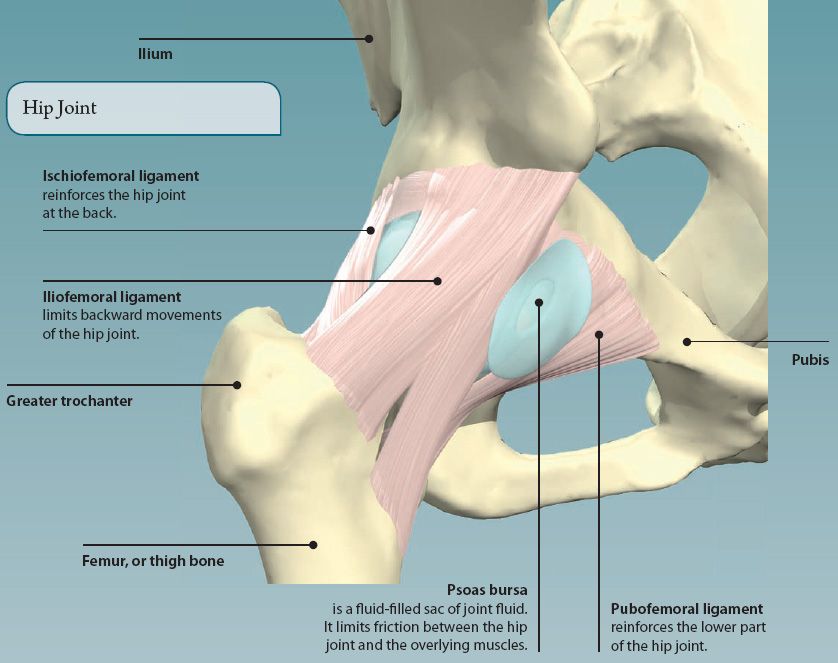The lower limbs are attached to the trunk by strong joints between the hip bones and sacrum. The lower limb is made up of the femur (thigh bone), tibia (shin bone), fibula, and various smaller bones of the ankle and foot. It can be divided into five regions; the hip, thigh, knee, leg, and foot.
The lower limbs support the weight of the body and allow us to walk, run, and jump. This requires stable but mobile joints, along with strong muscles acting across them.
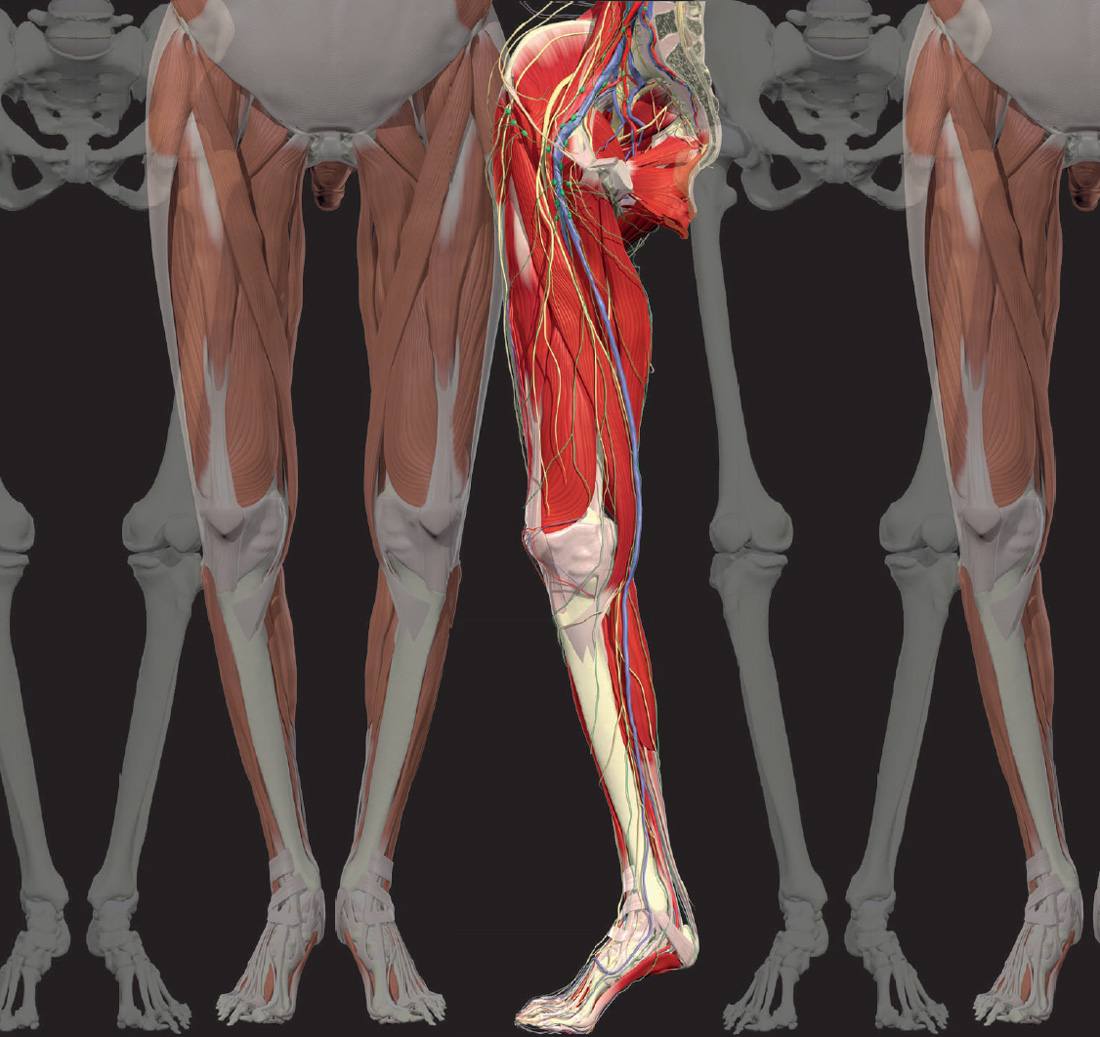


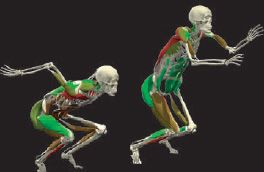
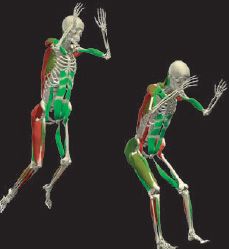
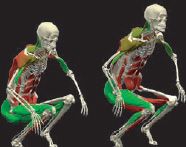

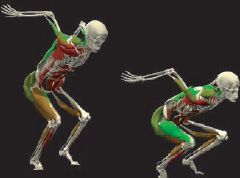
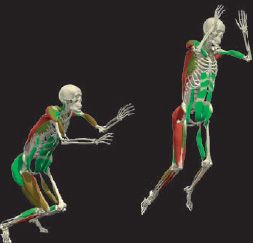

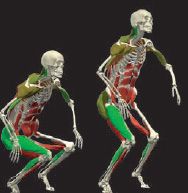
THE HIP JOINT
The hip joint is a ball and socket joint. It is formed as the round head of the femur sits within the cup-shaped acetabulum of the hip bone. It is a strong but mobile joint, and can be moved forward, backward, and sideways, as well as allowing some rotation. Movements are limited by various ligaments, which strengthen and stabilize the joint.
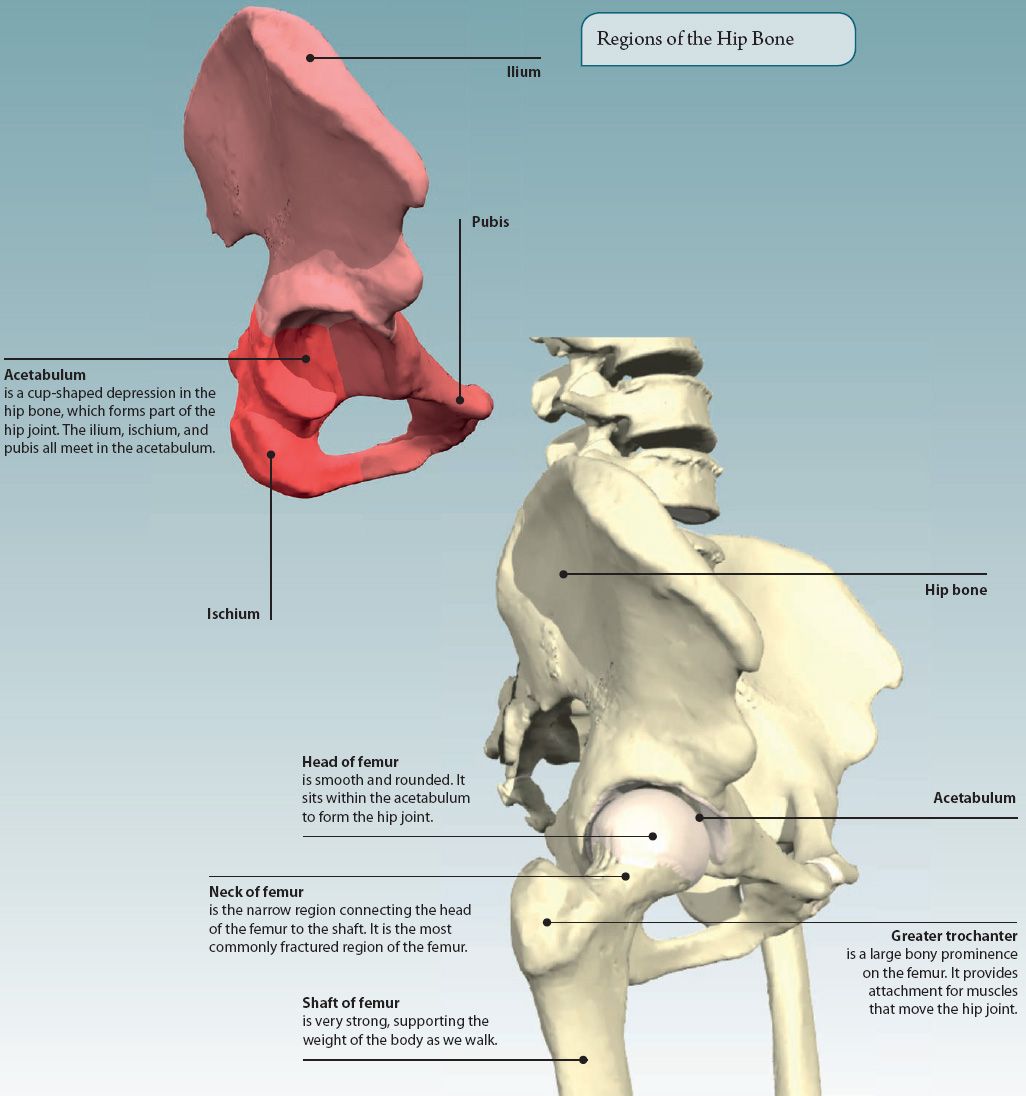
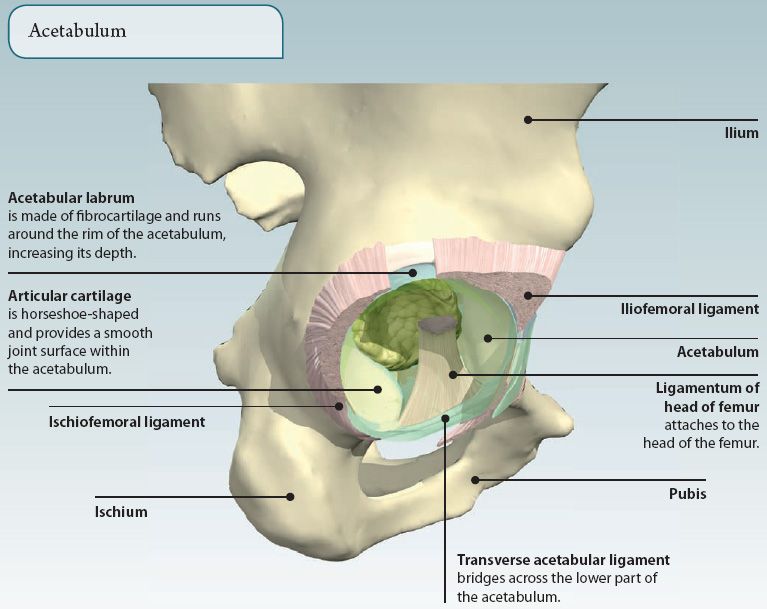


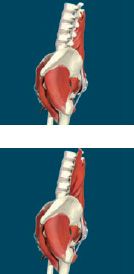
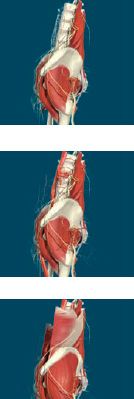
MUSCLES OF THE HIP AND THIGH
The hip is the region of the lower limb around the hip bone. The thigh is the region of the lower limb between the hip and the knee. Strong muscles in these regions move the hip and knee joints, allowing us to walk.
The thigh can be divided into three main compartments (anterior, posterior, and medial) whose muscles all have similar actions at the hip or knee joints.
Did you know?
Vastus medialis forms the muscular bulge just above the inside of the knee when it is straightened. It is often the first muscle to shrink in size (atrophy) if the limb is injured and cannot be exercised.
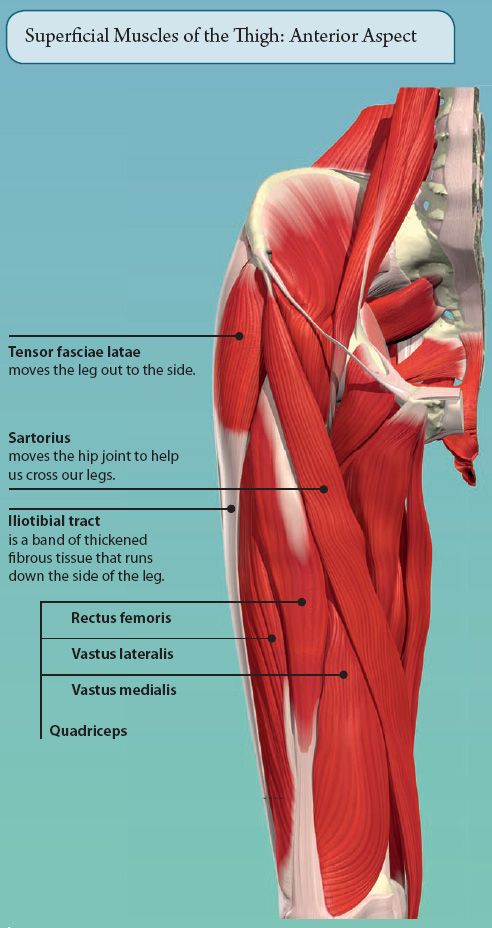
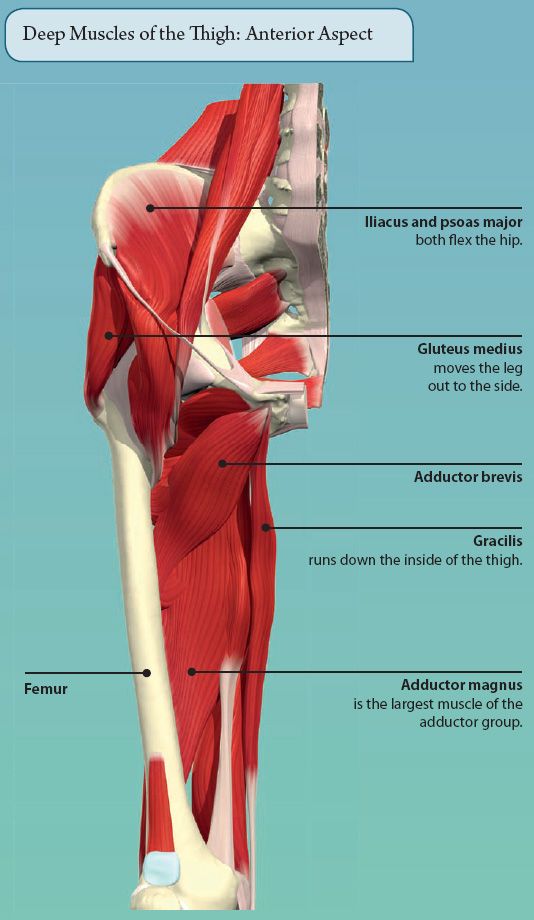

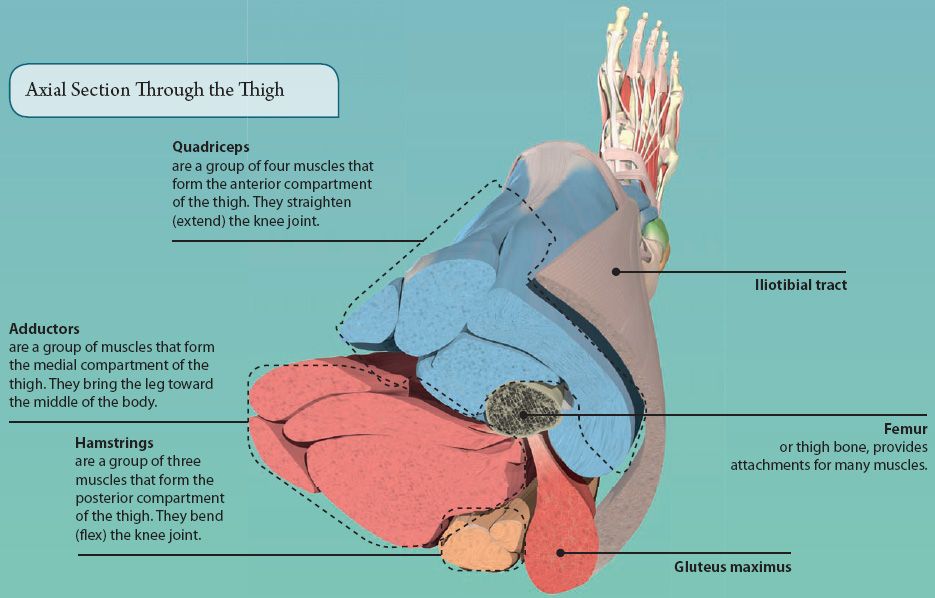
NEUROVASCULAR STRUCTURES OF THE HIP AND THIGH
Blood is distributed to the hip and thigh by branches of the internal and external iliac vessels. Various nerves travel through the hip and thigh, supplying the muscles and skin of the lower limb.
Did you know?
If the nerve roots that supply the sciatic nerve become trapped or irritated in the lower back, the sensation of pain often radiates down the entire lower limb to the foot. This is known as sciatica.
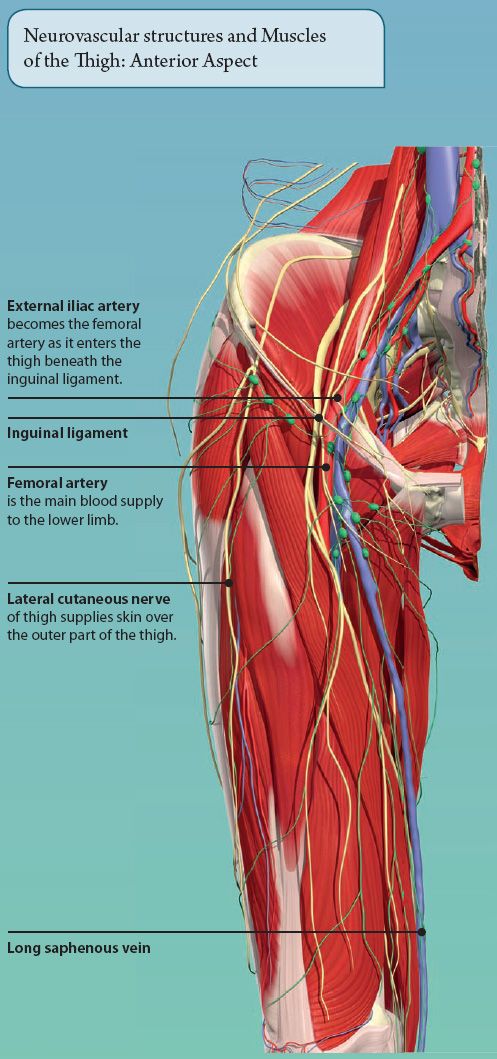
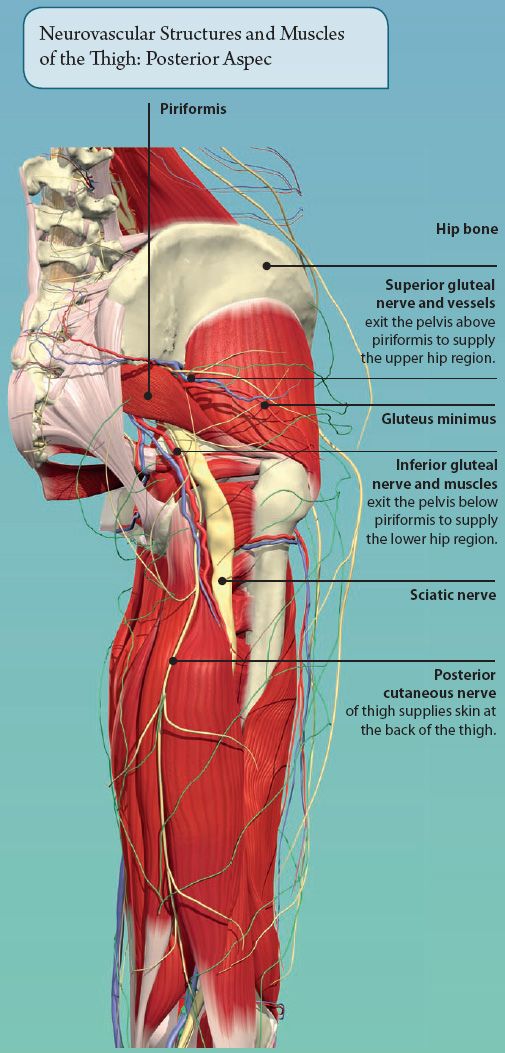
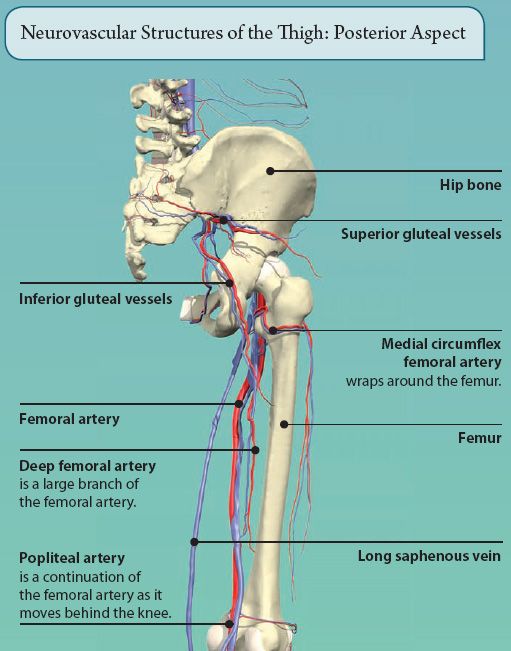
Nerves of the Hip and Thigh

Sciatic nerve
is the largest nerve in the body. It supplies the hamstring muscles before dividing into the common fibular and tibial nerves.
![]()
Obturator nerve
innervates the adductor muscles on the inner thigh.
![]()
Femoral nerve
innervates the quadriceps muscles.
![]()
Saphenous nerve
Stay updated, free articles. Join our Telegram channel

Full access? Get Clinical Tree


